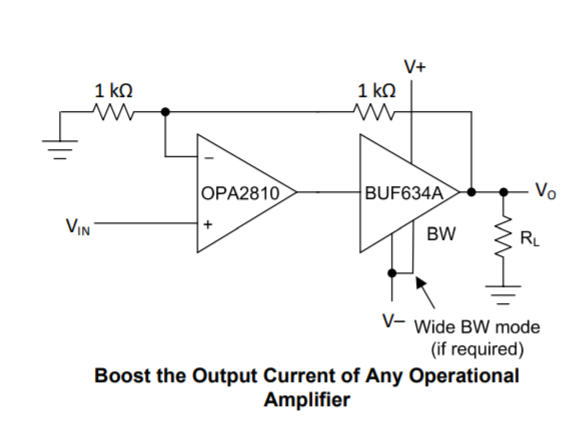Other Parts Discussed in Thread: BUF634A, OPA2810, OPA2677, TINA-TI
Hello,
I am working on the design of an active filter I need an operational amplifier powered in 15 volts and injecting a high current ideally 500mA; I selected the THS3491 but on simulations it saturates from 150mA. could you suggest me another or a buffer;
Thank you




